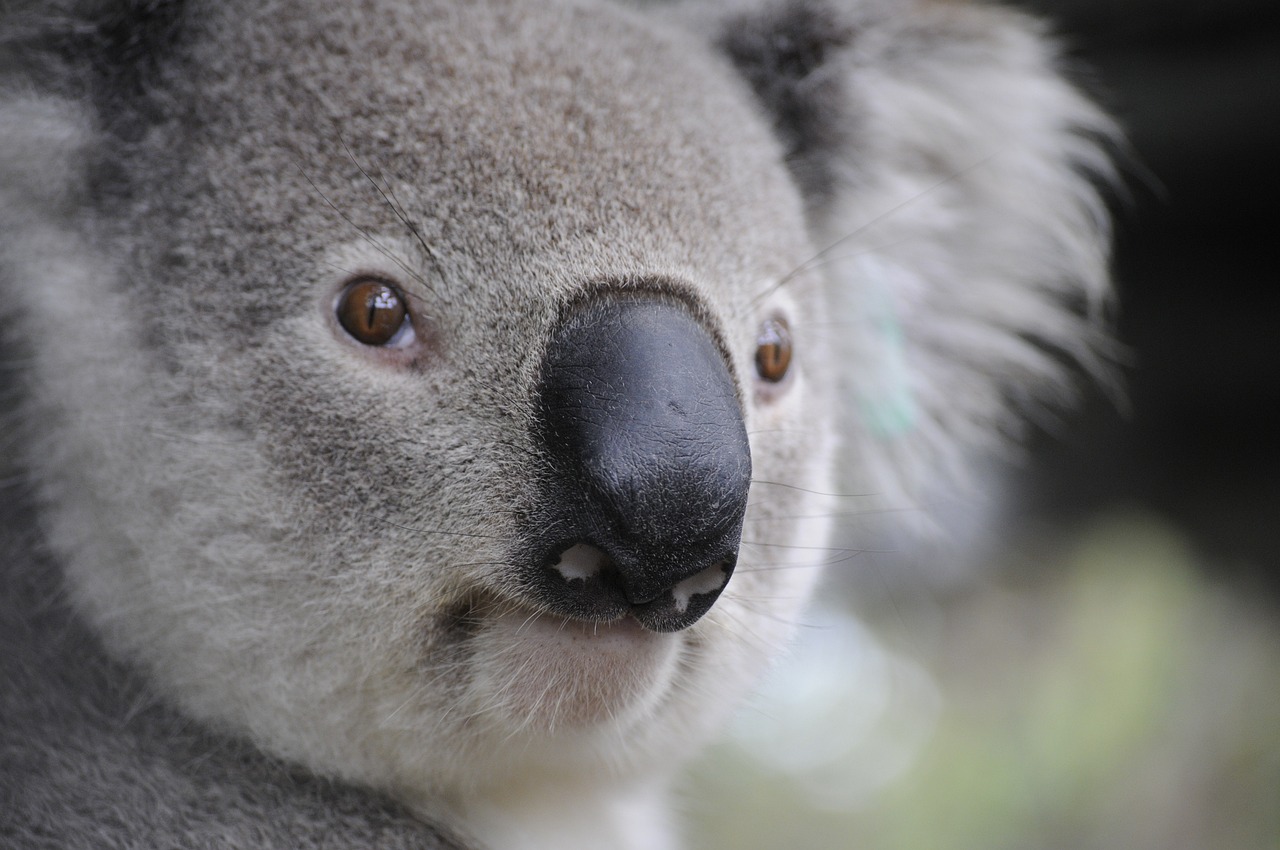
“The koala does not drink water, nor does it ever touch the ground. It lives almost entirely on eucalyptus leaves, and even the young joey will eat only the mother’s excrement until it is able to digest the poisonous leaves.”
Tim Flannery
Background:
Welcome to the Virtual Koala Exhibit, where you will learn all about these beloved Australian marsupials! There are actually three different types of koalas, each with their own scientific name:
Queensland koala (Phascolarctos cinereus adustus)
New South Wales koala (Phascolarctos cinereus cinereus)
Victorian koala (Phascolarctos cinereus victor)
Koalas are native to Australia and are found in the eastern and southeastern parts of the country. They are arboreal animals, meaning they spend most of their time in trees. Eucalyptus leaves make up the majority of their diet, and they are able to consume up to a kilogram of leaves per day.
Koalas are marsupials, which means they give birth to relatively undeveloped young that then develop further in their mother’s pouch. The gestation period for a koala is around 35 days, after which a tiny, hairless joey is born. The joey crawls into its mother’s pouch and attaches itself to a nipple, where it will remain for the next six months, feeding on milk and growing rapidly.
Koalas have a unique digestive system that allows them to break down the toxins in eucalyptus leaves. Their digestive tract contains special bacteria that can detoxify the harmful compounds in the leaves, which would be poisonous to most other animals.
Koalas have a thick, woolly fur that helps to insulate them from both the heat and the cold. Their fur is also water-resistant, which helps to keep them dry in wet conditions. They have large, fluffy ears that are able to swivel to pick up sounds from different directions, and they have sharp claws that help them climb and cling to trees.
Unfortunately, koalas are facing numerous threats to their survival, including habitat loss due to land clearing, bushfires, disease, and climate change. Conservation efforts are underway to protect koala populations and their habitats, but there is still much work to be done to ensure their long-term survival.
Quick Facts:
- Koalas are herbivores and eat eucalyptus leaves.
- They have sharp claws that help them climb trees and cling to branches.
- Koalas are marsupials, which means they carry their young in a pouch.
- They sleep for up to 20 hours a day!
- Koalas have a unique digestive system that allows them to break down the toxins in eucalyptus leaves.
Fun Facts:
- Koalas have fingerprints just like humans do.
- Baby koalas are called joeys, and they are born the size of a jellybean!
- Koalas have a special kind of fur that helps regulate their body temperature.
- The average lifespan of a koala in the wild is around 13-18 years.
- Koalas have a low-pitched snore that can be heard from quite a distance away.
Fun Facts for Kids:
- Koalas have two thumbs on each paw to help them climb trees.
- A baby koala stays in its mother’s pouch for around six months before emerging.
- Koalas are excellent swimmers and have been known to swim across rivers and lakes.
- The word “koala” means “no drink” in some Indigenous Australian languages, because koalas get most of their water from the leaves they eat.
- Koalas are sometimes called “koala bears,” but they are not actually bears at all!













